Once Upon A Time In America (1984)
Directed by: Sergio Leone
Written by: Enrico Medioli, Franco Arcalli, Franco Ferrini, Leonardo Benvenuti, Piero De Bernardi, Sergio Leone, Stuart Kaminsky
Starring: Elizabeth McGovern, James Woods, Robert De Niro, Tuesday Weld
HCF REWIND 92: ONCE UPON A TIME IN AMERICA [1984]
AVAILABLE ON DVD AND BLU RAY [Extended Version was available on DVD and Blu Ray as a R2 import from Italy, but has been temporarily withdrawn due to quality issues]
RUNNING TIME: 219 mins/ 240 mins Extended Version
REVIEWED BY: Dr Lenera, Official HCF Critic
SPOILERS THROUGHOUT!
1933: New York’s Lower East Side. Some hit men are searching for a certain David ‘Noodles’ Aaronson, a Jewish gangster who has supposedly betrayed his friends Maximilian Bercovicz, Patrick “Patsy” Goldberg and Phillip “Cockeye” Stein, to the police. They kill his girlfriend Eve and beat up his friend ‘Fat’ Moe Gelly, but Noodles escapes with some money he finds in a safe. 1968: Noodles has been summoned back out of hiding by a letter telling him he needs to have the bodies of Max, Cockeye and Patsy moved, even though they have already been relocated to a fancy cemetery. Noodles realises he has been found and begins to investigate. 1920: Noodles and his friends are poor street kids and petty criminals, working for a gangster named Bugsy……
Once Upon A Time In America is to me a major contender for Best Film Ever Made. I’m not going to say it actually is the best ever, because there are to my mind a considerable number of other great motion pictures which vie for that title, and perhaps a small number that are better overall. Something about Sergio Leone’s final masterpiece, both a sweeping gangster epic and a poetic meditation on time, memory and loss, always keeps me returning to it though, even though to be honest it’s not the most entertaining film, being considerably melancholic and even depressing. For sheer entertainment, The Good,The Bad And The Ugly betters it. But Once Upon A Time In America, like I think many favourite films that people have, reaches me personally in a way which is hard to describe, and I’m well aware of saying this about a film which has as its supposed ‘hero’ a guy who kills and even rapes. It’s a brutal, ugly, uncompromising film that never glamorises gangsters that films like The Godfather and Goodfellas do [one of the major reasons it has never come anyway near the popularity of those two films], but it’s also, paradoxically, a haunting, expressionistic, even beautiful movie. Overall, it’s a quite staggering work of art that, despite its great length, casts a spell that never lets go.
Amazingly Leone had first considered making this film back in 1967 just after For A Few Dollars More, and constantly planned aspects of it until it finally began shooting in 1982. Composer Ennio Morricone wrote the musical themes in 1976! Around this time Gerald Depardieu and Jean Gabin were going to star. Based on a 1953 autobiographical novel called The Hoods by Harry Grey, the script considerably expanded the book, not to mention adding the film’s complex Citizen Kane-style telling of the story where the film flashes back and forth in time, but when I read the book a few years ago I was surprised how much of the film was in there. It was a hugely expensive and some might say indulgent production, though some major scenes went unfilmed such as an elaborate early scene of a 1933 trainload of cars turning into a trainload from 1968, against which the title of the movie would appear. The initial cut was still incredibly long, especially as Leone had been contracted to deliver a film running 165 min. He reluctantly cut his 270 min version down to 229 min [which is 219 mins when converted to Pal]. This version, while it still got released everywhere else, was cut down to 139 min for US release, not only hacking the film to bits but changing it so it played chronologically. It also flopped catastrophically so they failed to make it more ‘commercial’.
There is no doubt that Once Upon A Time In America demands full concentration. We are hurled right from the beginning into two thirds of the way through a story that we are obviously not being given some vital information of, and after spending some time in 1933 we switch to 1968, and then soon after that to 1933. After this, more of the film does play chronologically apart from some flash forwards to 1968,but there’s no doubt a first-time viewer really has to concentrate on the film. There is no way to me that it would play with everything in the right order though; aside from removing some brilliant transitions, such as a candle in an opium den dissolving into a swinging lamp outside in the pouring rain, it would also alter it thematically. While Once Upon A Time In America contains many of the themes that featured in all of Leone’s films such as most importantly loyalty and betrayal, it’s also a movie about memory and dealing with the past. And isn’t the complex flashback structure a natural progression for a filmmaker who was using flashbacks more and more in his films [think of his film prior to this A Fistful Of Dynamite, which virtually told a parallel story with its occasional flashbacks]?
Some have said that the childhood scenes are the best in the film, and they certainly do have amazing vibrancy and even realism, while much of the stuff set in 1933 is very much a reflection of various gangster films of decades past, but actually there are references to other things throughout, from cinema to literature to art [for example the painting of Edward Hopper were a distinct influence]. The wonderful charlotte rouse scene, for instance, where a boy takes a cake to give to a young prostitute and while waiting outside her door gradually picks at it until there is nothing left, recalls Charlie Chaplin’s The Kid. Leone was such a genius that he was always able to use everything from direct quotations to oblique echoes and create something new. And there certainly isn’t much like his 1968 scenes in this movie, with their oddly somnambulistic in feel, though even here he can’t resist things like partially quoting Marcel Proust’s Remembrance Of Things Past when old Noodles is asked what he has been doing all these years and replies: “going to bed early”.
Upon its initial release much was made of Once Upon A Time In America’s violence, how it showed gangsters for they what they were truly like. Aside from one particular scene which I will go into later, the brutality, though occasionally graphic with eyes being shot out, beatings etc, doesn’t seem extreme at all these days, and in any case only takes up a small amount of the film’s running time. What ‘action’ there is, is very brief, Leone preferring to spend more time on dialogue and characters thinking, rather than doing. As usual, many scenes are slowed down. It’s quite possible that Leone could have told this story with an hour cut out, but then you wouldn’t have his amazing artistry, for instance the way he often emphasises the geography or emotion of a scene rather than the action that will play out in it. Take the scene where Noodles, near the end, after meeting Deborah after many years, sees her son and works out in his head who the mysterious Secretary Bailey is. The camera lingers on a close-up of Robert De Niro’s face for an agonisingly long time, the actor brilliantly showing his character’s thoughts mostly through his flickering eyes, before Bailey’s face appears out of the darkness, as if in a dream. Yes, one could do the sequence in a few quick edits, and it would probably be done that way today, but it wouldn’t have the impact or the beauty.
Like a fine meal, Leone’s films are to be enjoyed leisurely, you’re intended to luxuriate in the atmosphere, the texture [I’m sorry, but CGI can never better actual sets] and the feeling, while the story is sometimes secondary. And yet Once Upon A Time In America tells an amazing story, both expansive and intimate. It therefore doesn’t feel the need to finish with lots of action. It instead climaxes in a series of sometimes mystifying and ambiguous exchanges and revelations and a final confrontation which is concluded by a gun not being fired. Like life itself, the film gradually draws to a halt, and yet the first time I watched the film back in the late 80’s, I wasn’t bored for a second, so firm was Leone’s grip on the film, so hypnotic was its atmosphere and so compelling was the tale and its main character. I just didn’t notice that nothing of a physical nature had actually happened for ages.
This film has one of the most tragic main characters ever. Noodles is a person who always seems to do the wrong thing and is perennially an outsider, looking in at everything. So many scenes of the film just have him gazing. He doesn’t even really fit in with the other gangsters; check out how awkward he is when he meets Joe Pesci’s character for the first time. He’s also a borderline psychopath with serious issues about women, taking the cliché of the Italian [it’s perhaps a minor flaw that, in the end, these Jewish gangsters seem very Italian] ‘madonna/ whore’ complex to its extremes, and if you think that this aspect of the film makes it misogynist, notice how at least two other characters also suffer from similar sexist attitudes, and that Leone hardly seems to condone this. The way these gangsters treat their women is probably accurate. Most disturbing is Noodles’ raping of Deborah, the woman he’s infatuated with but can never have because he is always drawn back into his life of crime, usually by Max. It’s painful and distressing to watch, not so much for its graphic nature but because we are watching this immature, violent beast destroying any remaining chance there may have been of being together properly, and crucially Noodles neither seems to be enjoying it, nor appears to think what he is doing is wrong. I used to wish this scene was not in the film, and it does make Noodles even more unsympathetic, but it most certainly does belong in it. You never warm to Noodles at all in the film, but towards the end, you do feel sorry for him and he does achieve a kind of quiet dignity, even though his turning down of Max’s final offer is probably just as much his inability and unwillingness to accept that past events were rather different from what he thought, as it is in taking revenge on the man who has basically stolen his life.
Contrasted with Noodles the eternal loser and victim, a man whose life seems to be made up of moments that echo others, is Max, who ends up being the one who is devious to have a career in politics, though he stil can’t resist criminal activity. These gangsters never really grow up, the film’s parade of vulgar sexual content, such as a bit straight out of Porky’s where a woman gets all four of them, who are masked, to unzip their flies so she can tell who it was she had a sexual encounter with, is essential in showing the preoccupations of these emotionally stunted individuals and the world they live in. And in this overall very serious film are plenty of lighter passages, like a raid on a maternity ward scored perfectly to Rossini’s The Thieving Magpie. Once Upon A Time In America is like life, a serious business overall but a business in which you have to have fun once in a while, and while this movie is less flamboyant than Leone’s other films, he still finds time for bits of stylistic fun like a childhood confrontation with a killer that is scored by a bewildering array of background noises. Subtlety and restraint does dominate many scenes. The 1968 ‘reunion’ between Noodles and Deborah, for instance, is a master class in showing two people unable to really say what it on their minds, and is all the more touching for it. This is a film for adults who can read between the lines, who don’t need things to be spelt out,who don’t even need things to make literal sense.
The story it tells, it must be admitted, has its unbelievable aspects, but then the whole movie has a hallucinatory, dreamlike feel, revelling in its ambiguities and things like, for instance, Noodles being lost in some smoke as he watches Deborah leave on a train, the smoke definitely not coming from the train. The entire film seems permeated by the opium that Noodles periodically smokes, something that we open and close the film with. It has been suggested that all the 1968 scenes are in Noodles’ head, him trying to deal with what he has done [betraying and accidently causing the death of his friends]. I don’t really buy this, but it’s a fascinating notion. De Niro is perhaps outshone by James Woods, who has the more dynamic role of the two, but if you watch carefully De Niro’s performance is a masterpiece of ‘interior’ acting, where he constantly indicates what is going on in his head. I don’t think enough praise has been given to the young actors in the movie, but of course much has been given to Ennio Morricone’s yearning score, its heartbreaking themes binding the story together and, rather than scoring what characters are doing, scoring what they are thinking.
The film’s final scene sees Noodles smoking his opium pipe, and through a net cloth we see Noodles’s face gradually burst into a great smile. Does a better metaphor for the cinema exist?
Rating: 









THE EXTENDED EDITION
As I mentioned earlier, Leone’s first cut was 270 mins. Leone said several times that he wanted to put the footage he reluctantly cut out back in but never got around to it. For years it was said that the cut scenes existed but had no sound, but then fans of the film got immensely excited earlier this year when it was announced that 40 mins of footage, making up most of what was initially removed, were being put back into the film, and that this footage certainly had sound. It seemed that for years the Leone family had been trying to get the rights to do this and had finally succeeded. Then a small amount of disappointment took over when we were told that only 21 mins of extra footage would be incorporated into the film. After a prestiguous Cannes showing and a few in Italy, the planned screenings elsewhere were cancelled and the DVD and Blu Ray was only released in Italy due to legal wrangles which for some reason are not allowing the extra footage to be seen in a cinema or on a TV outside that country. The DVD and Blu Ray itself has just been withdrawn amidst complaints about its quality. Except for the extra scenes, the film looked fine to me. There are rumours it will come back, but at the time of writing, this review is almost a HCF exclusive!
Now 21 mins probably doesn’t seem much in the context of such a long film, and these restored scenes do stick out like a sore thumb on the Italian DVD because the picture and sound aren’t too good and for some reason they automatically go into Italian subtitles which are un-removable. These scenes are most definitely worth seeing for fans of the movie though. Leone liked to cut entire scenes from his films rather than bits and pieces of scenes so the overall rhythm wasn’t disrupted. Does this movie benefit from the extra footage? I would say yes, but only if a future release is able to present them as looking as good as the rest of the film. A newcomer to Once Upon A Time In America is probably best viewing the normal version and anyway the added scenes can easily be viewed totally legally on the internet. It almost goes without saying that if you consider the film too long and slow in the first place these scenes may just make the film worse for you, as the majority of them are dialogue-heavy.
So what is extra? Well, there is no extra childhood footage and, though there is a very good small exchange between Noodles and his chauffeur played by producer Arnon Milchan showing how the Jewish community viewed their gangsters,there is only one major 30’s sequence, but it’s a good one, showing how Noodles meets Eve, the woman he appears to have an almost normal relationship with, and who just suddenly appeared by Noodles’ side in the 219 min cut. Apart from a couple of minor additions though the majority of the new footage is 1968 scenes. You get to see Louise Fletcher as the owner of the cemetery which old Noodles visits, in a dialogue scene where she seems to know far more than she is letting on. The 1968 part of the film as a whole came across more as bits of a much longer subplot in the 229 min version and here some of that is filled in, with an early appearance by that truck that plays a vital part right at the end, and far more of a feeling of mystery. Said scene also explains why Noodles is suddenly interested in Secretary Bailey. You also get to see Deborah as Shakespeare’s Cleopatra, which contains another of Noodles’ lengthy gazes. The only sequence I don’t feel added much was a scene between Max and his union-boss partner Jimmy O’ Donnell. Sandwiched between two lengthy scenes of chat, Noodles and Deborah, and Noodles and Max, it makes the film’s final section a little slow even for my liking.
The footage still missing includes another scene between Noodles and Eve showing how their relationship begins ‘properly’; a still from this scene exists showing them being surprised in bed. It’s not clear whether the rest of the deleted footage is of too poor a quality to use or has just not been found. It’s possible that a couple of the scenes would no longer work because some lines of dialogue were transferred to other scenes when the scenes were initially removed. In any case, let’s just hope that, if they do add further scenes, the release is not confined solely to Italy and that the baffling legal stuff gets sorted out. Let’s also hope that they are able to restore the extra footage properly, including the stuff they have already put back into the movie, so they don’t jar with the rest of the film. A poster on one forum mentioned how CGI could be used to assist this, and I wouldn’t be against this as long as it was done with care. Once Upon A Time In America is one of the truly great films, the final masterpiece of one of the world’s best movie directors, and we need to see it as Leone originally intended.



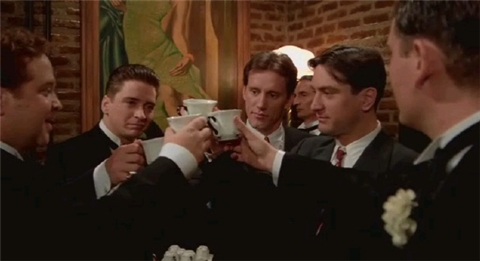


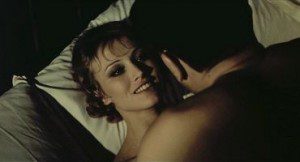
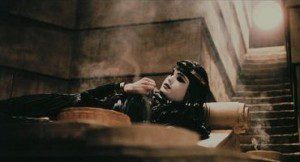


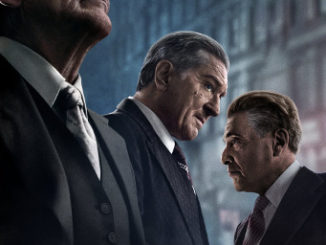
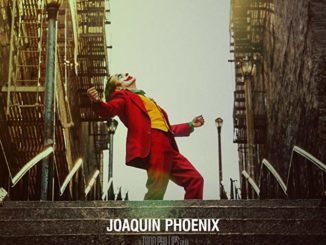
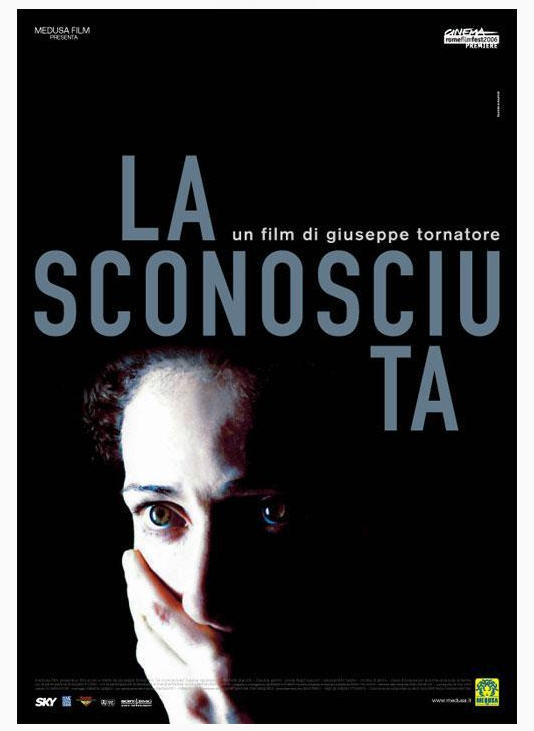
A great film!!!